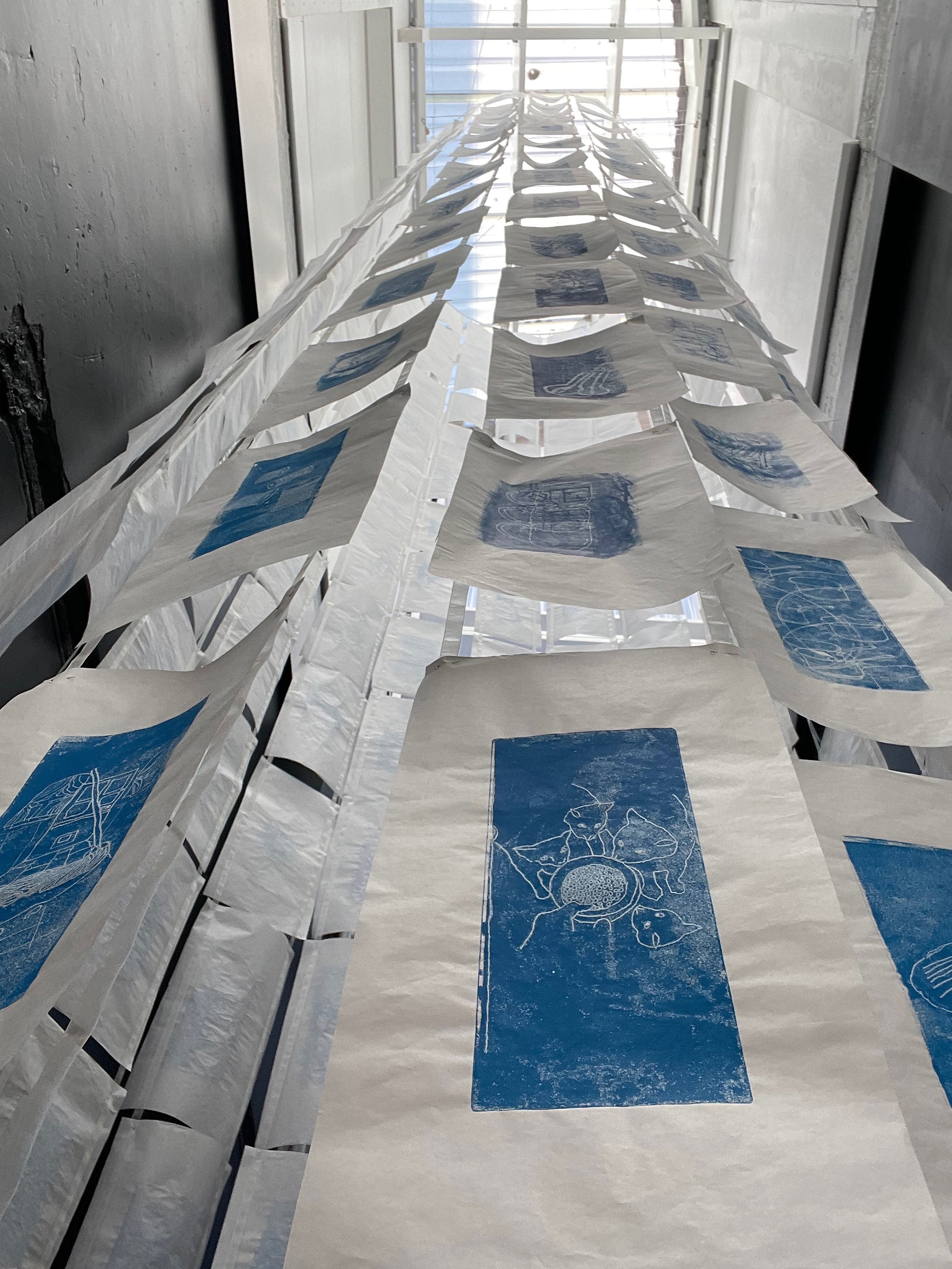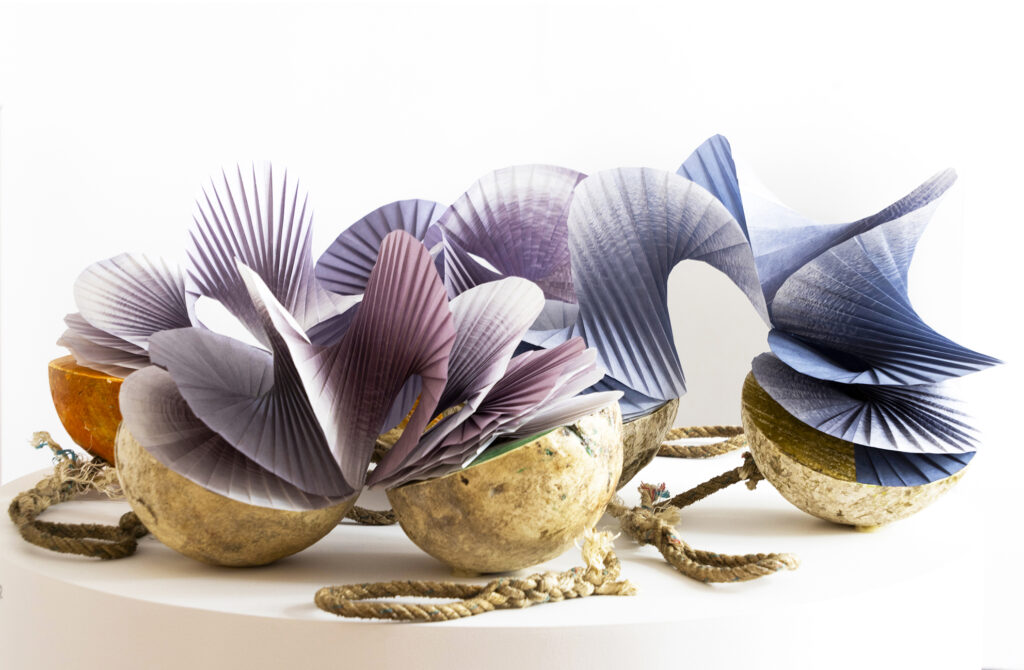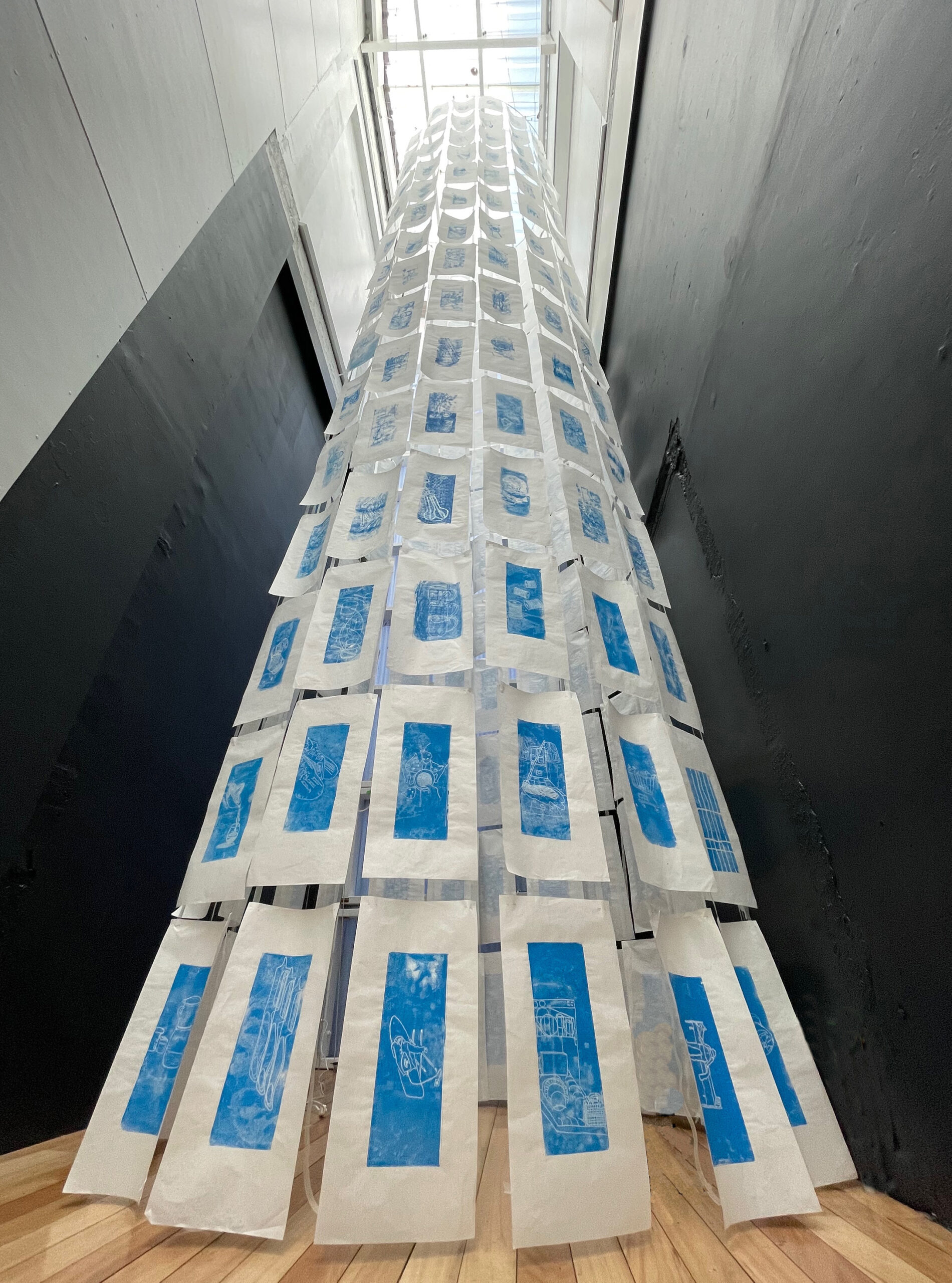
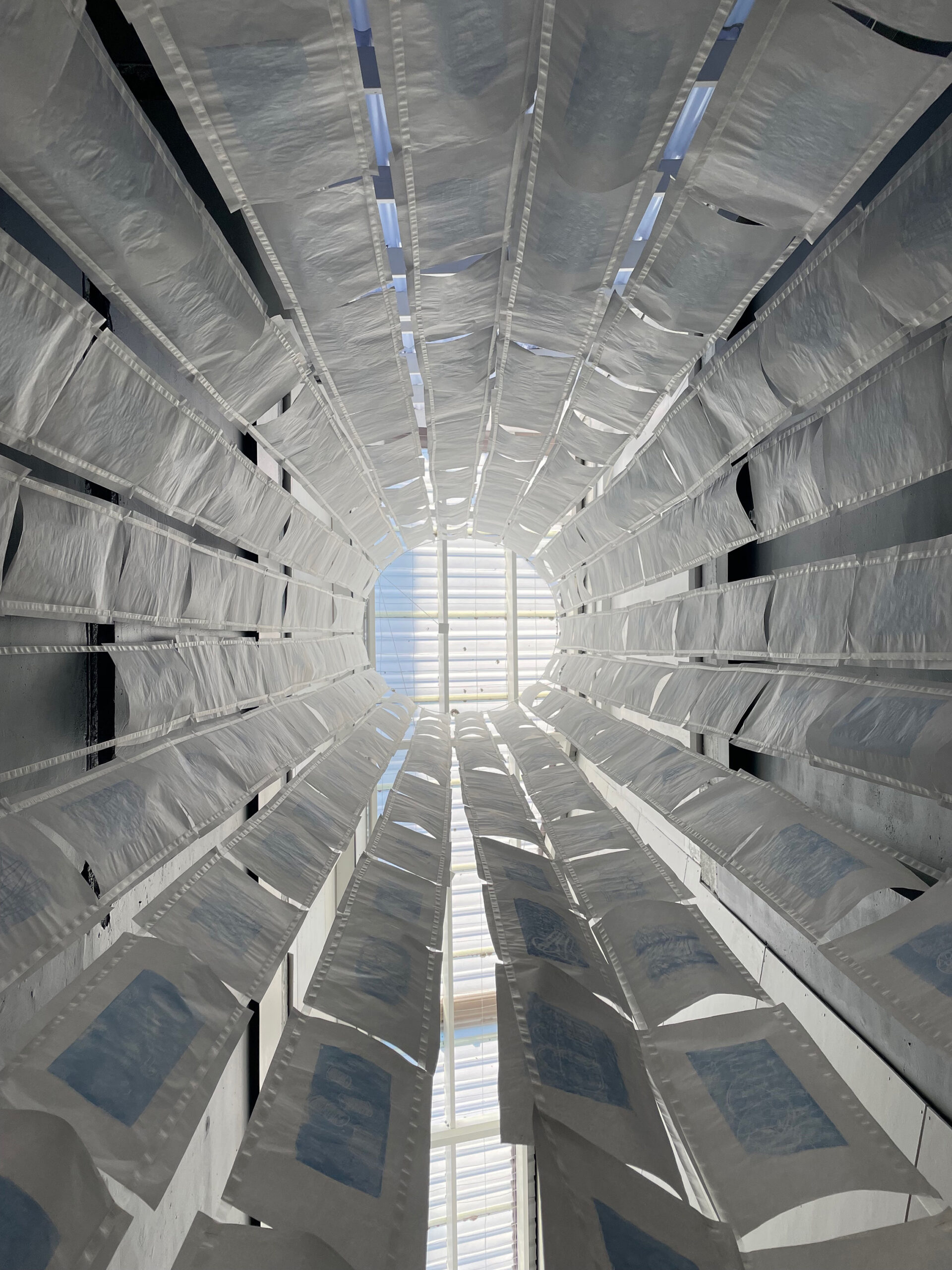
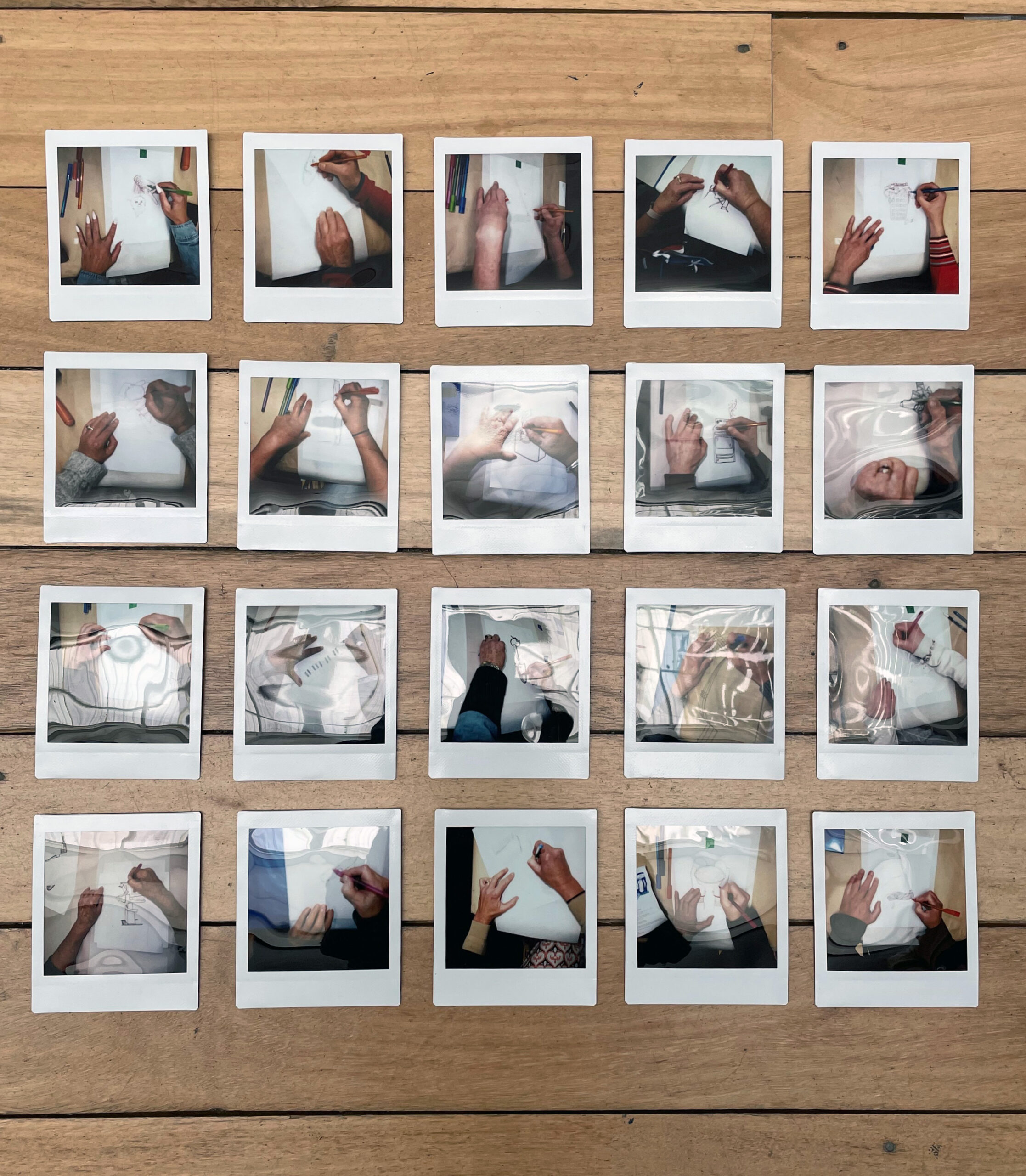
From top:
ImMaterial, detail, 2023, trace monotype, 8.5 metres x 1.7 metres
ImMaterial, 2023, trace monotype, 8.5 metres x 1.7 metres
ImMaterial, 2023, trace monotype, 8.5 metres x 1.7 metres
ImMaterial Hands, 2023, polaroid photos, variable dimensions
Q: What were some of the foundation ideas for this exhibition project?
A: Jennifer and I were chatting at our local Print Council of Aotearoa New Zealand meet up one evening and we realised we were both thinking about making work with the community that focused on the repetitive and mundane tasks in the lives of women and that we would manifest it as some form of sculptural installation. We wanted to honour the unpaid labour often done in the domestic setting by making a monumental piece from many prints created in community workshops.
The unseen and often unvalued work done everyday, mostly in the domestic setting, is a vital underpinning of society and daily life. During our research it was interesting to note that unpaid labour is the single largest sector of the New Zealand economy. This includes housework, caregiving and voluntary work amongst other things.
Settling on monotype as the simplest and most portable form of printmaking we started running workshops to give voice to people who performed this invisible labour. Each participant would contribute at least one print from the workshop and our intention was for the many small tasks to make the whole, an analogy to housework itself.
Q: How did the artwork selection take place?
A: The monotypes were made in workshops we ran with community groups, such as women’s centres and fellowships, parenting hubs and migrant women’s meetups. It was heartening to see how many community groups got together to support women.
Given that the brief to each participant was to make an image of a mundane task that resonated with them, the expectation was more on the expression of the subject than the perfection of the print. The selection was always intended to be inclusive and respectful of the part many hands played in creating the big picture. Over 500 monotypes were made, most of which were used, so the sorting process was lengthy. We wanted the sculpture to graduate from dark to light as it went up, so working on the floor in the narrow space of the gallery, we arranged first in horizontal rows then in vertical rows in order of tonal value.
Getting an installation of works on paper to go this high was a challenge. We ended up hiring a cherry picker, which felt like being in a teacup on a toothpick, so as to suspend a hoop from a series of pulleys. We were then able to hoist slowly and check all the works were in the right order as we went.
Q: How does the exhibition manifest – what do visitors experience?
A: The unusual dimensions of the Might/Could Project space were a prompt for the form the installation was going to take. It is a long narrow room sandwiched between a french cafe and a chinese restaurant in downtown New Plymouth. Nine metres high and Jennifer’s wingspan wide, we envisaged a well-like form that would soar upwards. From that starting point we have constructed a two storey high sculpture that sits at the far end of the gallery. Visitors can walk in and around it taking in all the varied images on the monotypes that are symbolic of everyday tasks.
On the long wall on the way towards the sculptural centrepiece there are over 100 polaroid photos that record the hands of all the participants that took part in the workshops. During the workshops we made audio recordings and these have been compiled into a sound component which adds a layer of atmosphere. It’s a lovely background chatter of women’s voices, baby babble and laughter.
Q: What are some of the key works and what subject matter do they deal with?
A: The key work is the 9 metre high installation consisting of all the monotypes made by the community. It takes a form reminiscent of a well, evoking the ancient task of water collection which has forever been fundamental to domestic life. The viewer stands at the foot of the well and looks up at the prints, each one an image of a domestic task, as they tower upwards to the light of the skylight. Ordinary images such as dirty dishes, cat feeding, baby nursing, gardening tools and toilet brushes become elevated to the status of art.
The long rows of polaroid photos showing all the hands that made these prints is the second key work. The many hands that spent hours in domestic labour are the many hands that built this installation turning the invisible into the visible and the immaterial into material.
Q: What is it about the printmaking experience that you most appreciate?
A: The versatility of the medium. It seems to be possible to express any idea I have in one form or another of printmaking. One week I can be working on small etchings destined for a wall and the next taking it onto three dimensions with installations.
For Jennifer she likes how it aligns with her background in ceramics. As a trained potter she has an affinity with the multiple. One of the best remarks made to her was that she works in ceramics like a printmaker.
—
Im/Material is at Might/Could Project Space, Currie St, New Plymouth, Aotearoa / New Zealand, 2 September-15 October
instagram:
@might.could
@metaletcher
@jenniferhalli
—
Join the PCA and become a member. You’ll get the fine-art quarterly print magazine Imprint, free promotion of your exhibitions, discounts on art materials and a range of other exclusive benefits.

